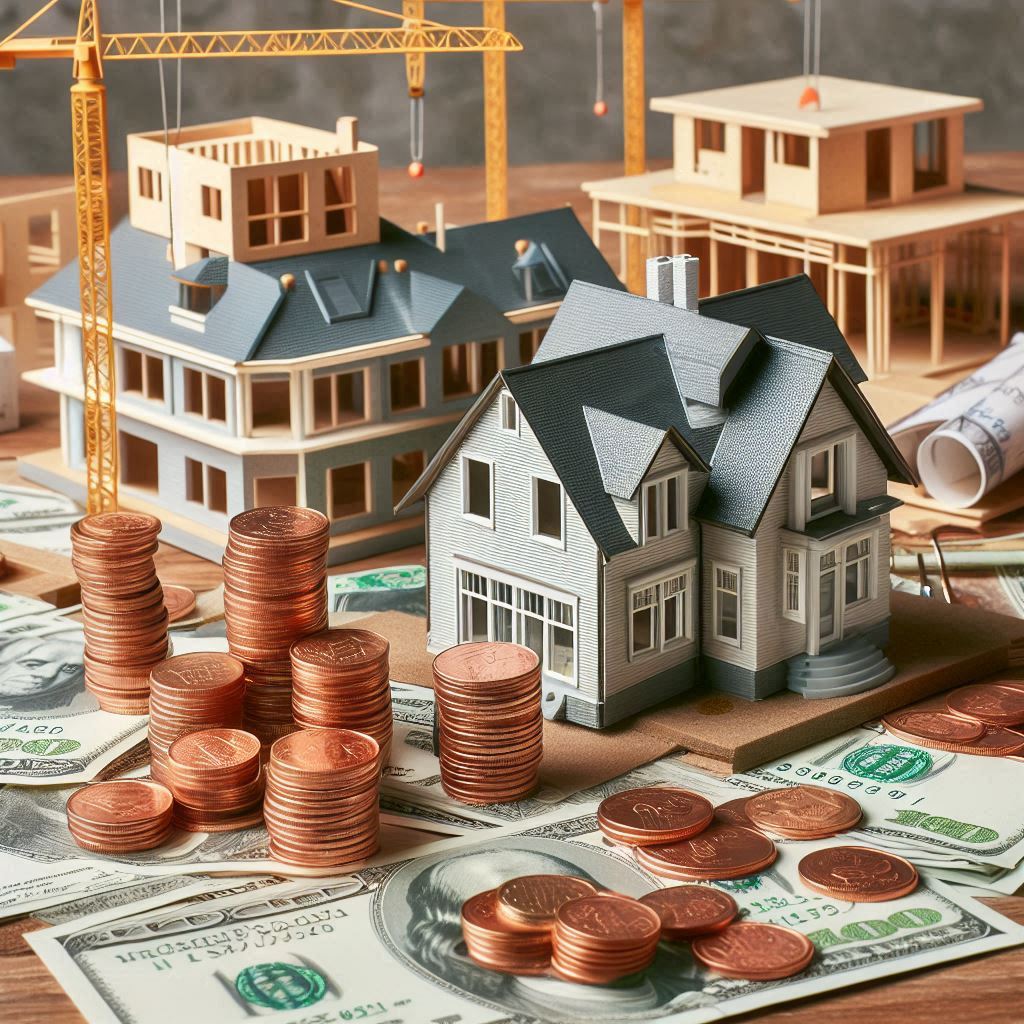Can you make money buying and selling homes?
Yes, you can make money buying and selling homes, a practice often referred to as real estate investing or flipping houses. Here’s how it generally works:
1. Flipping Houses
- Buying Low, Selling High: The goal is to purchase a property at a lower price, often one that needs repairs or is undervalued, and then sell it at a higher price after renovations.
- Renovations: Many investors add value by making improvements to the property, such as remodeling the kitchen, updating the bathroom, or enhancing curb appeal.
- Market Timing: Timing the market can also play a big role. Selling in a strong market with high demand can lead to substantial profits.
2. Long-Term Investment
- Appreciation: Over time, real estate tends to appreciate, meaning the property value increases. Holding onto a property for several years can lead to significant profits when sold.
- Rental Income: Some investors rent out properties before selling them. This provides regular income and can cover mortgage costs while waiting for the property to appreciate.
3. Tax Benefits
- Real estate investors may benefit from various tax advantages, such as deductions on mortgage interest, property taxes, and depreciation.
4. Risks
- Market Fluctuations: The real estate market can be unpredictable, and property values can decrease.
- Costs: Renovation costs can add up, and unexpected expenses may arise. Additionally, holding costs, such as property taxes, utilities, and insurance, can eat into profits.
- Liquidity: Real estate is not as liquid as other investments, meaning it may take time to sell a property.
5. Key Considerations
- Research: Understanding the local market, property values, and potential buyers is crucial.
- Financing: Securing favorable financing terms can make a big difference in profitability.
- Networking: Building relationships with contractors, real estate agents, and other investors can provide valuable opportunities and insights.
With the right knowledge, skills, and timing, real estate investing can be a profitable venture. However, it’s essential to carefully assess the risks and do thorough research before diving in.
Flipping Houses: How It Works, Where to Start, and 5 Mistakes to Avoid
Flipping houses is a popular real estate investment strategy where you buy a property, typically in need of renovation, fix it up, and sell it for a profit. Here’s a detailed guide on how flipping houses works, where to start, and common mistakes to avoid.
How Flipping Houses Works
- Finding the Right Property:
- Distressed Properties: Look for homes that are undervalued due to foreclosure, poor condition, or motivated sellers.
- Market Analysis: Assess the local real estate market to determine if the property is a good deal and has potential for profit after renovation.
- Financing the Purchase:
- Cash: If you have the capital, paying in cash can streamline the process and save on financing costs.
- Mortgages: Traditional loans, hard money loans, or private lenders are other financing options. Ensure the terms align with your investment timeline.
- Renovating the Property:
- Cost Estimation: Get a detailed estimate of the renovation costs, including materials, labor, permits, and unexpected expenses.
- Project Management: Hire reliable contractors or manage the renovation yourself to ensure it’s completed on time and within budget.
- Improvements: Focus on renovations that add the most value, such as kitchen and bathroom upgrades, new flooring, and curb appeal enhancements.
- Selling the Property:
- Pricing: Set a competitive price based on market analysis, recent sales in the area, and the upgraded features of the home.
- Marketing: Use professional photography, staging, and effective marketing strategies to attract buyers.
- Negotiation: Be prepared to negotiate with potential buyers to close the deal at the best possible price.
- Profit Calculation:
- Gross Profit: Subtract the purchase price and renovation costs from the selling price.
- Net Profit: After accounting for additional expenses like holding costs (e.g., property taxes, utilities), real estate agent commissions, and closing costs, the remaining amount is your net profit.
Where to Start
- Education:
- Books & Courses: Start with books, online courses, or workshops on real estate investing and house flipping to understand the basics.
- Networking: Join local real estate investment groups or online forums to learn from experienced investors.
- Research the Market:
- Location: Identify neighborhoods with growth potential, low crime rates, good schools, and rising property values.
- Property Types: Determine what types of properties (e.g., single-family homes, condos) are in demand in your chosen area.
- Build a Team:
- Real Estate Agent: Find an agent who specializes in investment properties.
- Contractors: Develop relationships with reliable contractors who can provide quality work at a fair price.
- Lenders: Establish connections with lenders who offer favorable terms for real estate investments.
- Create a Business Plan:
- Outline your goals, budget, timeline, and strategy for flipping houses.
- Include contingencies for unexpected challenges or market changes.
- Start Small:
- Begin with one property to gain experience before scaling up to multiple flips.
5 Common Mistakes to Avoid
- Underestimating Costs:
- Solution: Always overestimate your renovation budget and include a buffer for unexpected expenses. Get multiple quotes from contractors and plan for contingencies.
- Overestimating the After-Repair Value (ARV):
- Solution: Be conservative with your ARV estimates by researching comparable sales (comps) in the area. Avoid the temptation to over-improve the property beyond the neighborhood’s standard.
- Poor Time Management:
- Solution: Create a detailed renovation timeline and stick to it. Delays can lead to higher holding costs, so ensure all contractors are held accountable for deadlines.
- Choosing the Wrong Location:
- Solution: Invest in areas with strong demand, good schools, and growth potential. Avoid properties in declining neighborhoods, even if the purchase price is low.
- Skipping the Home Inspection:
- Solution: Always conduct a thorough home inspection before purchasing. This helps identify structural issues, mold, or other costly problems that might not be visible initially.
Final Thoughts
Flipping houses can be a lucrative venture if done correctly. It requires careful planning, diligent research, and a willingness to adapt to challenges. By starting with a solid foundation of knowledge and avoiding common pitfalls, you can increase your chances of success in the house-flipping business.
How to start flipping houses for beginners?
Starting to flip houses as a beginner can be exciting but also challenging. Here’s a step-by-step guide to help you get started:
1. Educate Yourself
- Books & Courses: Begin with real estate books, online courses, and YouTube channels focused on house flipping. Knowledge is crucial to making informed decisions.
- Networking: Join real estate investment groups, either locally or online, to connect with experienced investors. Attend seminars, webinars, and real estate meetups to learn from others’ experiences.
2. Create a Business Plan
- Set Clear Goals: Define what you want to achieve, whether it’s making a certain profit per flip or flipping a set number of houses per year.
- Budget & Financing: Determine how much capital you have and how much you need. Decide whether you’ll use cash, a mortgage, or other financing options like hard money loans.
- Timeline: Outline the timeline for each flip, including the purchase, renovation, and sale phases.
3. Research the Market
- Choose the Right Location: Identify areas with good schools, low crime rates, and growing demand. Look for neighborhoods with rising property values and upcoming developments.
- Understand Local Market Trends: Research the types of properties that sell quickly and at a good price in your chosen area.
4. Build Your Team
- Real Estate Agent: Find an agent who understands the local market and can help you find undervalued properties.
- Contractors: Build relationships with reliable contractors who can provide quality work on time and within budget. Consider having multiple contractors for different aspects of the renovation.
- Lenders: Establish connections with lenders who offer favorable terms for real estate investments, such as banks, credit unions, or hard money lenders.
5. Find the Right Property
- Search for Deals: Look for properties that are undervalued or in need of repair. These can be found through real estate listings, auctions, foreclosures, or word-of-mouth.
- Run the Numbers: Use the 70% rule as a guideline: pay no more than 70% of the after-repair value (ARV) of the property, minus the renovation costs. For example, if the ARV is $200,000 and renovations cost $30,000, you shouldn’t pay more than $110,000 for the property.
6. Secure Financing
- Traditional Mortgage: If you have a good credit score and a solid down payment, a traditional mortgage might be an option.
- Hard Money Loan: These are short-term loans designed for real estate investments. They often have higher interest rates but are easier to obtain, especially for distressed properties.
- Private Lenders: Some investors use private lenders, which can be individuals or companies willing to invest in your project for a share of the profits.
7. Renovate the Property
- Create a Detailed Plan: Before starting renovations, create a detailed plan and budget. Focus on improvements that add the most value, such as kitchens, bathrooms, and curb appeal.
- Hire Contractors: Depending on your skills, you may hire contractors for most of the work. Ensure they are licensed, insured, and have good references.
- Manage the Project: Keep a close eye on the renovation process to ensure it stays on schedule and within budget. Be prepared for unexpected issues and costs.
8. Sell the Property
- Pricing Strategy: Price the home competitively based on market analysis and comparable sales in the area.
- Marketing: Use high-quality photos, staging, and online listings to attract buyers. A good real estate agent can help with this.
- Negotiation: Be prepared to negotiate with potential buyers. Ensure you’re clear on your minimum acceptable price and terms.
9. Analyze and Learn
- Evaluate Your Results: After selling the property, analyze what went well and what didn’t. Review your profit, timeline, and any challenges you faced.
- Continuous Improvement: Use your first flip as a learning experience. Apply these lessons to improve your strategy for the next flip.
10. Start Small and Scale Up
- Begin with One Property: Start with a single flip to gain experience and minimize risk. As you become more comfortable and knowledgeable, you can take on multiple projects simultaneously.
- Build Your Portfolio: Over time, as you gain experience and confidence, consider expanding your portfolio by flipping multiple properties or exploring other real estate investment strategies.
Final Tips:
- Be Patient: Flipping houses requires patience, especially in the beginning. Don’t rush into a deal without doing your homework.
- Stay Within Budget: Stick to your budget to avoid overextending yourself financially.
- Focus on Value-Adding Renovations: Prioritize renovations that will give you the highest return on investment.
Starting small, doing thorough research, and learning from each experience will set you on the path to successful house flipping.
What is the golden rule for flipping houses?
The golden rule for flipping houses is: “Buy low, sell high.”
This means you should aim to purchase a property at a price significantly below its market value or in a condition that allows you to add substantial value through renovations. After making cost-effective improvements, you then sell the property at a higher price to achieve a profit.
This rule underscores the importance of smart purchasing decisions, accurate cost estimation, and understanding the market to ensure that the sale price exceeds the combined cost of acquisition, renovations, and other expenses.








